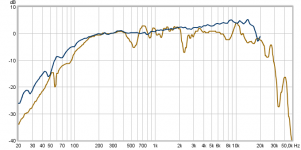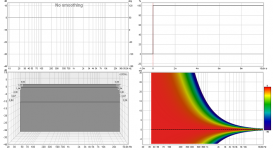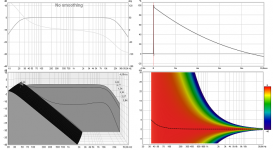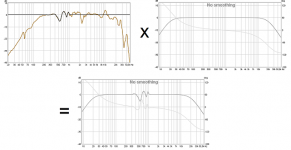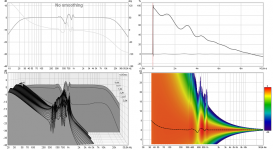I don't think you can measure DDR, it's a subjective quality coined by Dave and I'm not sure there's any consistent understanding of what it is or whether you'd recognize it if you heard it yourself ???
Dave did not coin the term, Allen Wright did way before i ever met him.
It is not subjective, but since we haven't been able to figure out how to measure it yet, the only way to observe it is to listen, which usually is subjective.
dave
Dave did not coin the term, Allen Wright did way before i ever met him.
It is not subjective, but since we haven't been able to figure out how to measure it yet, the only way to observe it is to listen, which usually is subjective.
dave
since WE cant define it nor measure it, it's a pure fuzzy marketing term.
when defining a technical thingy gets slippery. he'll be sure to add that extra feeling of science with dubious audiophile personalities attached.Joe Rasmussen could probably pull up something closer
if we can build comms to deep space how come we cant measure this. whatever you may call it?
in otherwords there are real tests to do most anything we can define. IMO it's a ideal sales tool that sounds like rare science yet undiscovered ! ask another Audio Guru is proof ...perfecto
Last edited:
Member
Joined 2009
Paid Member
that's a bit of a stretch - THD does correlate with what we hear, but it's not the simple all-encompassing correlation that had been hoped for.
I think it's possible to come up with some definitions for DDR (I suggested something above, as a start). If you are going to be a proponent for DDR as a valid quantifiable metric then one can only expect to be challenged to define it
If it's not quantifiable then it's akin to saying something is 'beautiful' and as the ancient philosophers knew only too well - it can't be defined ! or measured ! and has more in common with my tag line than measurement science.
I think it's possible to come up with some definitions for DDR (I suggested something above, as a start). If you are going to be a proponent for DDR as a valid quantifiable metric then one can only expect to be challenged to define it
If it's not quantifiable then it's akin to saying something is 'beautiful' and as the ancient philosophers knew only too well - it can't be defined ! or measured ! and has more in common with my tag line than measurement science.
Last edited:
You still see THD even thou it was shown to have crap all to do with what we hear many decades ago …
dave
because THD its just another marketing tool with a three letter acronym.
it really was useful for a single numbered spec... back when bad transistor amp designs littered the landscape.
Could DDR be a form of mass-loaded compression? According to Russell Hamm, tube amplification in a state of overload (but before objectionable clipping) exhibit this, leading to a subjective increase in detail.
"Vacuum-tube amplifiers differ from transistor and operational amplifiers because they can be operated in the overload region without adding objectionable distortion. The combination of the slow rising edge and the open harmonic structure of the overload characteristics form an almost ideal sound- recording compressor. Within the 15-20 dB "safe" overload range, the electrical output of the tube amplifier increases by only 2-4 dB, acting like a limiter. However, since the edge is increasing within this range, the subjective loudness remains uncompressed to the ear...Since the loud signals can be recorded at higher levels, the softer signals are also louder, so they are not lost in tape hiss and they effectively give the tube sound greater clarity."
This deals with microphone preamps, so a bit of a reverse in terms of transducer to voltage amplifier relationship.
Hamm, Russell. 1973. "Tubes vs Transistors: Is there an audible difference?". Journal of the Audio Engineering Society. Retrieved from tvst1.
"Vacuum-tube amplifiers differ from transistor and operational amplifiers because they can be operated in the overload region without adding objectionable distortion. The combination of the slow rising edge and the open harmonic structure of the overload characteristics form an almost ideal sound- recording compressor. Within the 15-20 dB "safe" overload range, the electrical output of the tube amplifier increases by only 2-4 dB, acting like a limiter. However, since the edge is increasing within this range, the subjective loudness remains uncompressed to the ear...Since the loud signals can be recorded at higher levels, the softer signals are also louder, so they are not lost in tape hiss and they effectively give the tube sound greater clarity."
This deals with microphone preamps, so a bit of a reverse in terms of transducer to voltage amplifier relationship.
Hamm, Russell. 1973. "Tubes vs Transistors: Is there an audible difference?". Journal of the Audio Engineering Society. Retrieved from tvst1.
that's a bit of a stretch - THD does correlate with what we hear, but it's not the simple all-encompassing correlation that had been hoped for.
You aren't confusing single number THD with the harmonic distortion (ie shows individual harmonics, not THD)? THD is a useless metric and we have known that for a long time.
I think it's possible to come up with some definitions for DDR
A little googling shows that the definition is in Allen Wright's Tube Preamp Cookbook. (Allen Wright - The Tube Preamp Cookbook [English]). Anyone got their copy handy, mine might be hard to find.
If it's not quantifiable
It is, i just have not seen it measured so hard to put a number too. Pano made some initial tests to see if he could come up with a way of measuring it, but gave up. Allen may have had a start but he passed at far too young an age.
akin to saying something is 'beautiful'
It is not that.
dave
because THD its just another marketing tool with a three letter acronym.
it really was useful for a single numbered spec... back when bad transistor amp designs littered the landscape.
That is why it is still around, but it was never a useful spec.
dave
That is why it is still around, but it was never a useful spec.
dave
no it's not the problem. the problem is the sales guys had become so fixated on it became a silly numbers game at the expense of everything else. Face it 4" speakers don't have a lot going for them, esp. large dynamic range! so you guys must draw the attention to something else, so they turn the whole thing upside down.
X, what you should do is run an ABX test. In this test, there are three clips: the reference, the modified version and a third clip of either the reference or the modified version. What people have to identify is whether X sounds like A or B. If you get 50-50 responses, you know there is no effect. This will also somewhat mitigate the mic response variable as long as you use the same mic for the all three clips. You are not asking for a preference (this is not a test for multiple drivers), you are only asking if X sounds more like A or more like B. So, the mic response has no impact on the outcome, assuming its not totally wonky.
Now, we know from past measurements that "enable" does not change the frequency response. So, hopefully, the two drivers you have---stock and the "enabled" one---have identical responses. If their responses vary by over even a db in the critical region between 1k-5k, all bets are off.
Now, we know from past measurements that "enable" does not change the frequency response. So, hopefully, the two drivers you have---stock and the "enabled" one---have identical responses. If their responses vary by over even a db in the critical region between 1k-5k, all bets are off.
Last edited:
That planet10 has a preference in sound stage picture and a certain group of preferred drivers is alright but that he continue pull the low level detail (DDR) card is in my opinion very wrong. Amplitude and time domain distortions hinders him to hear deep into low level detail or into the recording room because that distortion place a veil or tails that will mask real low level details.
Here FF85WK verse 10F/8424 curves traced from datasheet:
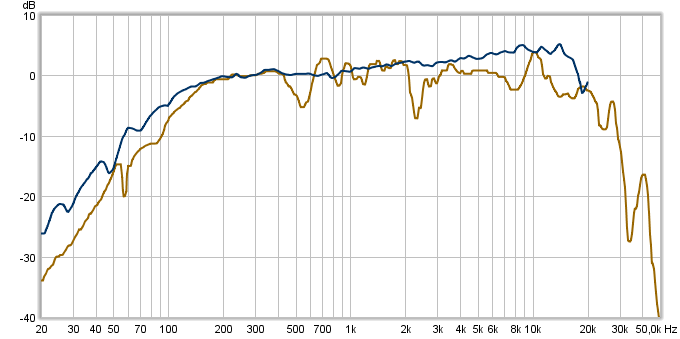
Perfect impulse DC to light speed that would be nice to have as speaker performance because output is then true to input:
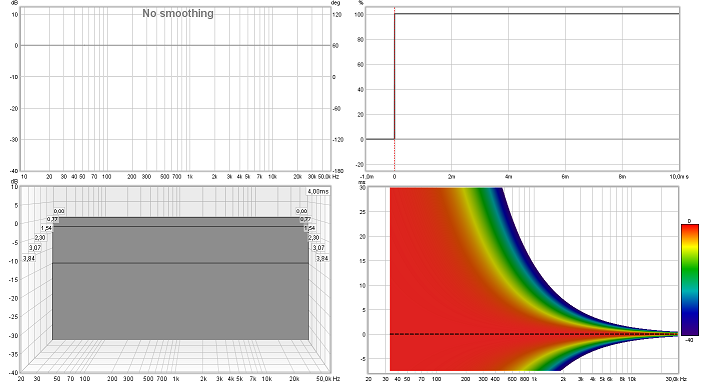
More realistic for speaker performance a perfect band pass with 2nd order stop bands at 20/20.000Hz:
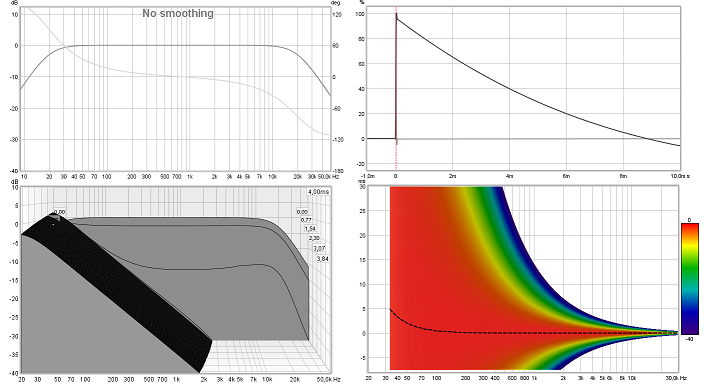
Replica of IRR (minimum phase) errors in area 300-1000Hz taken from FF85WK added to perfect 20-20.000Hz band pass:
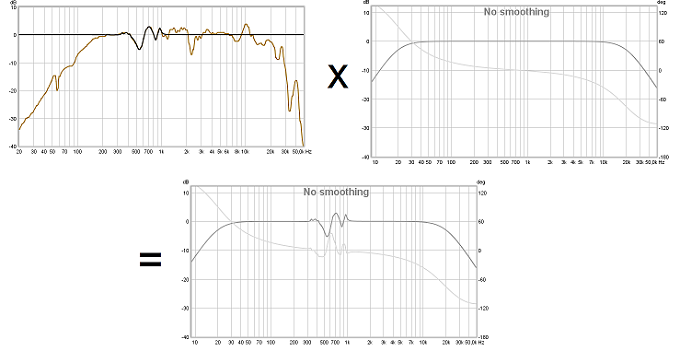
Compare this to the perfect one above not only distortion in amplitude domain also time domain, error tails with time lag clear visible into waterfall and wavelet is good also show frq dependent time distortion that is advanced in time:
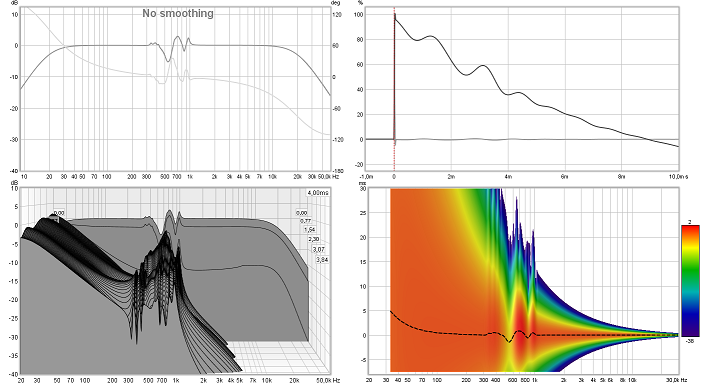
Here FF85WK verse 10F/8424 curves traced from datasheet:

Perfect impulse DC to light speed that would be nice to have as speaker performance because output is then true to input:

More realistic for speaker performance a perfect band pass with 2nd order stop bands at 20/20.000Hz:

Replica of IRR (minimum phase) errors in area 300-1000Hz taken from FF85WK added to perfect 20-20.000Hz band pass:

Compare this to the perfect one above not only distortion in amplitude domain also time domain, error tails with time lag clear visible into waterfall and wavelet is good also show frq dependent time distortion that is advanced in time:

Attachments
Last edited:
The frequency response plots of the Fostex vs the Scan Speak suggest the speakers will sound different. Enable might improve the DDR (and overall sound) of the Fostex when treated - or the Scan Speak. But comparing the two drivers (enabled or not) might not result in changing the listeners preference. Enable supposedly increases the enjoyment of the driver you prefer, not produce the ultimate driver.
If I were to take the liberty for a moment of equating the enable process to simply coating a driver with dammar I'd say, in the instance of coating a piezo cone element, the sound quality improved because the driver sounded more relaxed. I believe, if measured, the frequency response had been altered (perhaps smoothed out peaks or reduced high frequencies) and sibilance reduced. In fact, the frequency response may have measured worse - but I preferred the sound and coated a few more piezos. Certainly, there was no harm in doing so and I felt like a proud DIYer. I still cut off dustcaps here and there but largely leave drivers stock nowadays.
In general, I agree with Bigun. I'm certainly curious to SEE the effects of enable on a chart and HEAR the differences of the samples. We will have to rely on Fostex's quality control for matching the drivers. I expect it will be close enough and the debate will continue.
We must also consider the DDR of one driver may be superior to another - regardless of treatment - if it exists at all.
If I were to take the liberty for a moment of equating the enable process to simply coating a driver with dammar I'd say, in the instance of coating a piezo cone element, the sound quality improved because the driver sounded more relaxed. I believe, if measured, the frequency response had been altered (perhaps smoothed out peaks or reduced high frequencies) and sibilance reduced. In fact, the frequency response may have measured worse - but I preferred the sound and coated a few more piezos. Certainly, there was no harm in doing so and I felt like a proud DIYer. I still cut off dustcaps here and there but largely leave drivers stock nowadays.
In general, I agree with Bigun. I'm certainly curious to SEE the effects of enable on a chart and HEAR the differences of the samples. We will have to rely on Fostex's quality control for matching the drivers. I expect it will be close enough and the debate will continue.
We must also consider the DDR of one driver may be superior to another - regardless of treatment - if it exists at all.
I am not hear to argue the semantics of the name but I have done some subjective testing. The nice thing about having so many drivers on hand is that you can do a wide variety of these tests. I believe this so called DDR exists.We must also consider the DDR of one driver may be superior to another - regardless of treatment - if it exists at all.
It's part of why I don't put all my eggs in the graph basket. There are drivers out there, winning the 'on paper' contests, that don't sound as good when comparing them with others in realistic environments.
I'm not here to try and convince anyone that I'm right but we should all keep an open mind as even 50 somethings like me continue to experience new things. I don't care that it can't be explained yet, I don't really need to know.
We must also consider the DDR of one driver may be superior to another - regardless of treatment - if it exists at all.
That is very true. DDR exists in all audio devices… it is a matter of magnitude. The larger the DDR the greater the devices ability to preserve low level information. It is also very unlikely to be a single number, but at least a frequency dependent curve.
dave
Well, in my world of understanding DDR, then it would show up in MLSSA measurement. If driver does not have fast decay, the small/weak/whatever signals will be masked. Combine fast decay with a low RMS and a flat response with a balanced distortion graph. Voila, a "detailed" driver is born...."Easypeasy"
But wait, a "detailed" and "resolving" driver is often without any filter components, resulting in an uneven response. Yeah right, this argument is a lost cause as long there are people who does not believe in measurement and correlating conclusions.....
Peter
But wait, a "detailed" and "resolving" driver is often without any filter components, resulting in an uneven response. Yeah right, this argument is a lost cause as long there are people who does not believe in measurement and correlating conclusions.....
Peter
Well if all of these tests are undocumented I would love to see a documented one, and if one really doesn't exist or no one can set one up, I plan to do so hopefully in the coming months
If you plan to present the results here I advice you to set up a new thread and discuss how such a test should be prepared and conducted.
- Name and measure the units.
- Conduct a blind test between driver A and B, B not modified.
- Conduct a blind test between driver A and B, B modified.
- Number of turns
- Switch procedure / apparatus
- etc
- etc2
or you will not be trusted alt. bashed
//
According to Dr Toole and others, listeners need training to give meaningful results in blind testing. I found these links to free ear training software.
The Poor Audiophile: Blind Audio Testing: The Scientific Truth Behind the Myth
The Poor Audiophile: Blind Audio Testing: The Scientific Truth Behind the Myth
A lot of interest is brewing for this comparison between the two flavors of FF85WK. Listening to the enabled one, it sounds very nice - I think it is one of better drivers out there from Fostex. I would like to get this test going as FAST as possible (pun intended) and avoid using a miniDSP or PC based DSP XO. I will try to throw together a passive XO this weekend. Byrtt had helped me develop one a while back and I could resurrect it as a starting point. I seem to recall something of order 2.5mH on the low pass and 56uF with some padding resistors on the high pass. I will do a proper one by taking FRD files and simulating the XO in PCD. The time alignment can only be done by offsetting the tweeter back. So it won't be a flat baffle but a Dagger for the FF85WK in its own enclosure sitting above the RS225-8 in its own box. Aiming for a 600Hz xo first order. If I get adventurous I can make a 4th order passive low pass on the woofer and do a passive Harsch.
- Status
- This old topic is closed. If you want to reopen this topic, contact a moderator using the "Report Post" button.
- Home
- Loudspeakers
- Full Range
- Planet 10 measured improvements? FF85wk
